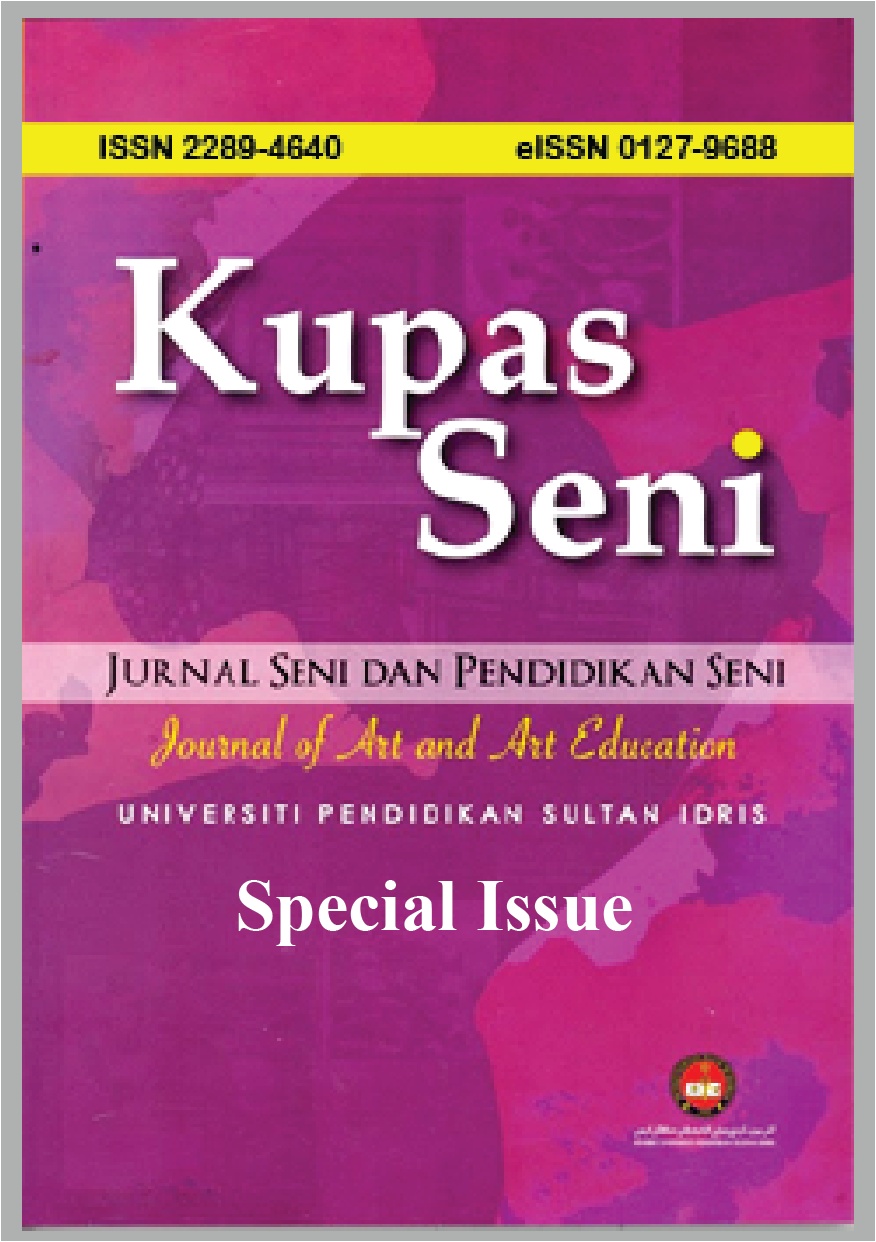Cubism Picasso
Kubisme Picasso
DOI:
https://doi.org/10.37134/kupasseni.vol10.sp.4.2022Keywords:
cube cube, Picasso, Art-Based Research Shaun McNiffAbstract
Picasso's cube art reflects his artist's unique style and when Shaun McNiff's Art-Based Research approach is applied, based on the content, there are six distinct categories of human nature, place, mood and mood, satire, scientific and educational thought. Shaun McNiff's Art-Based Research, which shows the theoretical underpinnings and ideas of the research, is important because there is a wide range of research disciplines with basic features of catanian art. It also makes the research activity more streamlined, the discovery faster and more accurate. The research on Picasso's cube theory is based on nine questions, what are the distinguishing features of the work, the names of the features, the features of it, how it was produced by Picasso and the researcher's reasoning, the reason for it being the benchmark of the existence of the value of the flow of the cubism, the reason why it is the point of strength of the work, what are the supporting features in the work and the reason why Picasso's cube is classified. Through Art-Based Research Shaun McNiff, Picasso's evergreen body and body of ideas are found and contemplated with contemporary art.
Downloads
References
Alfred H.Barr, Rj. (1936). Cubism and Abstract. New York: The Museum of Modern Art.
Blocker, H. G & Jeffers, J. M. (1990). Contextualizing Aesthetics: From Plato to Lyotard. Belmont: Wadsworth Pub.Co.
Cloud. (2012). Pablo Picasso Biography. http://www.youtube.com/watch?v=PeZvp0juhRE
Daniel-Henry, K. (2008). The Rise of Cubism. San Francisco: Wittenborn Art BooksDan O’Brien (2018) Cubism:Art and Philosophy.
Doss, J. M. (2001). Aesthetic Revolutionaries: Picasso and Joyce, tesis bagi memenuhi sebahagian syarat peroleh ijazah sarjana yang diajukan kepada Marshall University.
Jones, C., Lorenzen, M., & Sapsed, J. (Eds.). (2015). The Oxford handbook of creative industries. OUP Oxford.
Kara, H. (2015). Creative Research Methods (Art based Methods), National Cenre for Research Methods, retrieved from 18 Mei 2019.
McKinzey, J C. (1997). Conversations with The Masters: Picasso’s Dialoques with Velazquez, tesis bagi memenuhi sebahagian syarat peroleh ijazah sarjana yang diajukan kepada University of North Texas, Amerika Syarikat.
McNiff, S. (1998). Art-based research. Jessica Kingsley Publishers.
Muhammad Abdul Jabbar Beg. (1981). Fine arts in Islamic civilization. Kuala Lumpur: Sally Printing Services.
Museu Picasso de Barcelona. (2019). Permanent Collection virtual route, www.museupicasso.bcn.cat.
Nerd. (2016). How to Understand A Picasso http://www.youtube.com/watch?v=_HGW1DQO1xQ
Pablo Picasso Jr. (2013) HD Pablo Picasso Documentary http://www.youtube.com/watch?v=xVEV7CfDngs
Richardson, J. (2010). A Life of Picasso: The Triumphant Years, 1917-1932. New York: Random House USA Inc.
Weaver, B. (2016). Creative Truth. Boca Raton: CRC Press Taylor & Francis Group.
Zangwill, N. (2007). Aesthetic creation. Oxford University Press.





